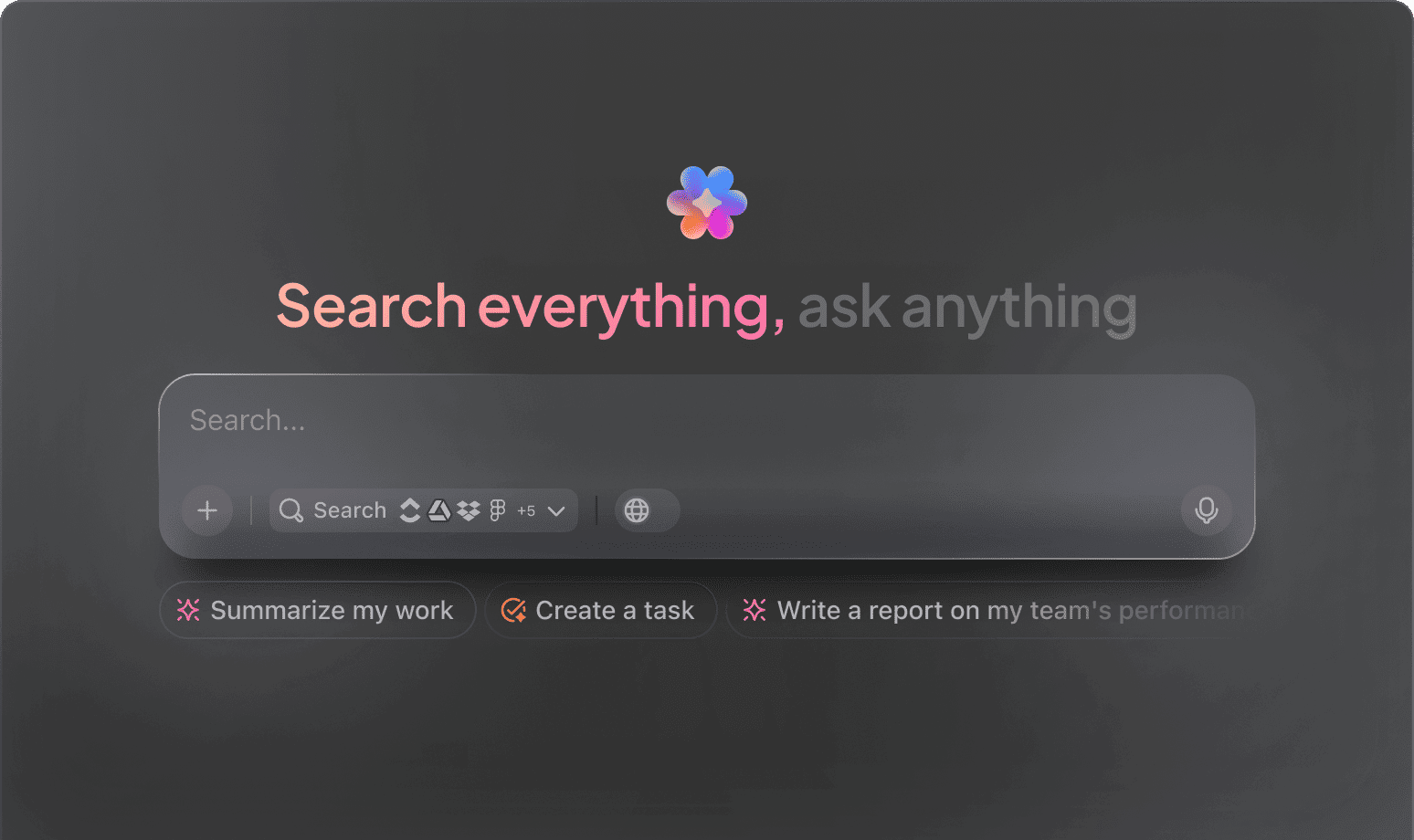Sprint Retrospective Insights
Top AI Prompts for Sprint Retrospective Reports
Capture team reflections, identify improvements, and enhance your sprint outcomes effortlessly using ClickUp Brain.
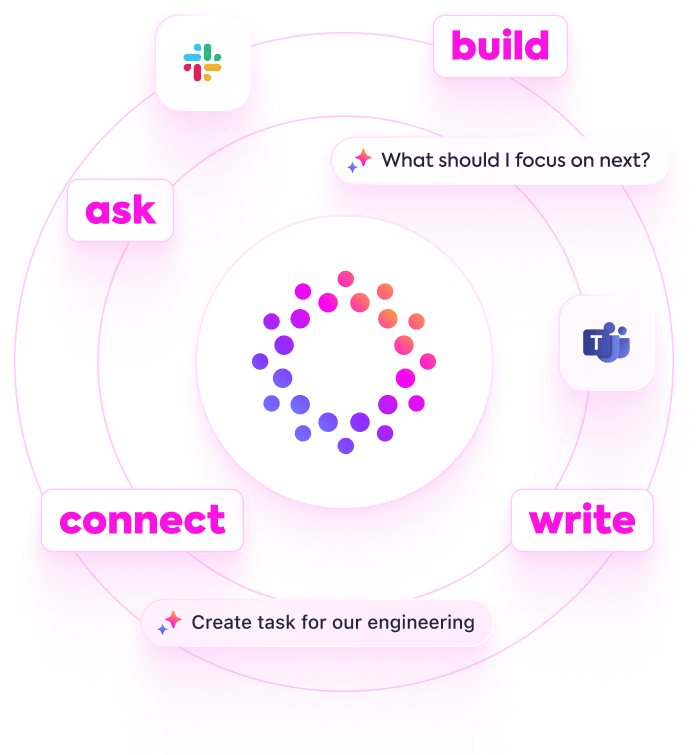
Trusted by the world’s leading businesses
AI in Sprint Retrospectives
Elevate Your Sprint Retrospective Reports with AI-Powered Prompts
Reflecting on your team's sprint progress goes beyond just reviewing completed tasks—it's about uncovering insights that drive continuous improvement.
From gathering feedback to identifying blockers and celebrating wins, sprint retrospectives involve multiple perspectives and detailed notes. AI prompts are now revolutionizing how teams capture and analyze this critical information.
Teams leverage AI to:
- Quickly highlight key themes and action items from discussion notes
- Generate clear, concise summaries of sprint outcomes
- Transform raw feedback into prioritized improvement plans
- Create structured reports that align with team goals and timelines
Integrated seamlessly into tools like docs, whiteboards, and task trackers, AI in platforms such as ClickUp Brain acts as your retrospective partner—turning scattered ideas into focused, impactful next steps.
Comparing ClickUp Brain with Conventional AI
Why ClickUp Brain Stands Apart
ClickUp Brain integrates seamlessly, understands your context, and acts swiftly—so you focus on progress, not explanations.
Conventional AI Solutions
- Constantly toggling between apps to collect information
- Repeating your objectives with each query
- Receiving generic, irrelevant feedback
- Hunting through multiple platforms to locate a single document
- Interacting with AI that only processes input passively
- Manually switching among different AI engines
- Merely another add-on for your browser
ClickUp Brain
- Deeply connected to your projects, notes, and team communications
- Retains your past interactions and objectives
- Provides insightful, context-driven guidance
- Offers unified search across all your resources
- Supports voice commands with Talk to Text
- Automatically selects the optimal AI model: GPT, Claude, Gemini
- Available as a native app on Mac & Windows, optimized for performance
Sprint Retrospective Insights
15 Essential AI Prompts for Sprint Retrospective Reports (Optimized for ClickUp Brain)
Enhance your sprint reviews—capture feedback, identify improvements, and align teams effortlessly.

Outline 5 key themes from the latest Sprint Retrospective meeting notes stored in the ‘Sprint 12 Review’ doc.
Use Case: Accelerates reflection by highlighting core discussion points.
ClickUp Brain Behaviour: Analyzes meeting summaries and extracts prominent topics to guide team focus.

Identify common blockers reported across the last three sprints in the ‘Sprint Challenges’ folder.
Use Case: Supports proactive resolution by surfacing recurring obstacles.
ClickUp Brain Behaviour: Aggregates and synthesizes issues from multiple sprint reports to reveal patterns.

Draft a concise action plan for improving team communication based on feedback in ‘Sprint 11 Retrospective’ notes.
Use Case: Aligns team efforts on targeted improvements.
ClickUp Brain Behaviour: Extracts relevant comments and structures them into a clear, actionable summary.

Compare velocity trends between Sprint 10 and Sprint 12 using data from the ‘Sprint Metrics’ doc.
Use Case: Enables performance tracking without manual data compilation.
ClickUp Brain Behaviour: Processes numerical data and presents a summarized comparison highlighting progress and dips.

List top suggestions for process improvements gathered from the last two retrospectives, referencing ‘Process Feedback’ docs.
Use Case: Helps prioritize impactful changes.
ClickUp Brain Behavior: Scans feedback documents and compiles frequently mentioned ideas with context notes.

From the ‘QA Testing Review’ doc, generate a checklist of testing issues raised during the sprint.
Use Case: Simplifies follow-up on quality concerns.
ClickUp Brain Behavior: Identifies reported defects and formats them into a task-ready checklist.

Summarize 3 emerging team collaboration trends from post-sprint surveys and internal communications.
Use Case: Keeps team dynamics aligned with evolving work styles.
ClickUp Brain Behavior: Extracts recurring themes and insights from survey responses and chat logs.

From the ‘Customer Feedback Q2’ doc, highlight key user experience issues impacting sprint deliverables.
Use Case: Focuses team attention on critical customer pain points.
ClickUp Brain Behavior: Analyzes feedback data to identify and summarize major UX concerns.

Write concise, motivating summary notes for the sprint review presentation using the tone guidelines in ‘TeamVoice.pdf’.
Use Case: Speeds up creation of engaging team communications.
ClickUp Brain Behavior: Draws from tone references to suggest uplifting and clear messaging options.

Summarize recent changes in agile best practices and how they could influence our sprint retrospectives.
Use Case: Ensures continuous process improvement with up-to-date methods.
ClickUp Brain Behavior: Reviews linked agile methodology documents and distills relevant updates.

Generate a checklist for sprint retrospective preparation tasks, referencing internal team guidelines.
Use Case: Ensures thorough and consistent meeting readiness.
ClickUp Brain Behavior: Extracts procedural steps and formats them into an actionable checklist.

Create a comparison of sprint retrospective formats used across teams, highlighting pros and cons from ‘Retrospective Formats’ docs.
Use Case: Supports selection of the most effective review approach.
ClickUp Brain Behavior: Summarizes documented formats and evaluates their impact in a clear layout.

What new feedback tools or techniques have teams adopted since 2023 to enhance retrospectives?
Use Case: Provides insights to innovate team reflection practices.
ClickUp Brain Behavior: Synthesizes trends from internal reports, tool reviews, and team notes.

Summarize key action items and blockers identified in the ‘Asia-Pacific Sprint Feedback’ folder.
Use Case: Drives region-specific sprint improvements.
ClickUp Brain Behavior: Extracts and prioritizes issues and tasks from localized feedback documents.

Summarize key cabin usability gaps from the Southeast Asia EV feedback folder (materials, layout, interactions).
Use Case: Drives region-specific product improvements.
ClickUp Brain Behavior: Extracts and prioritizes user-reported issues across survey responses, feedback notes, and tagged tickets.
Elevate Your Sprint Reviews with ClickUp Brain
Cut down on repetitive tasks, unify your team’s insights, and produce comprehensive retrospective reports effortlessly using AI-enhanced workflows.





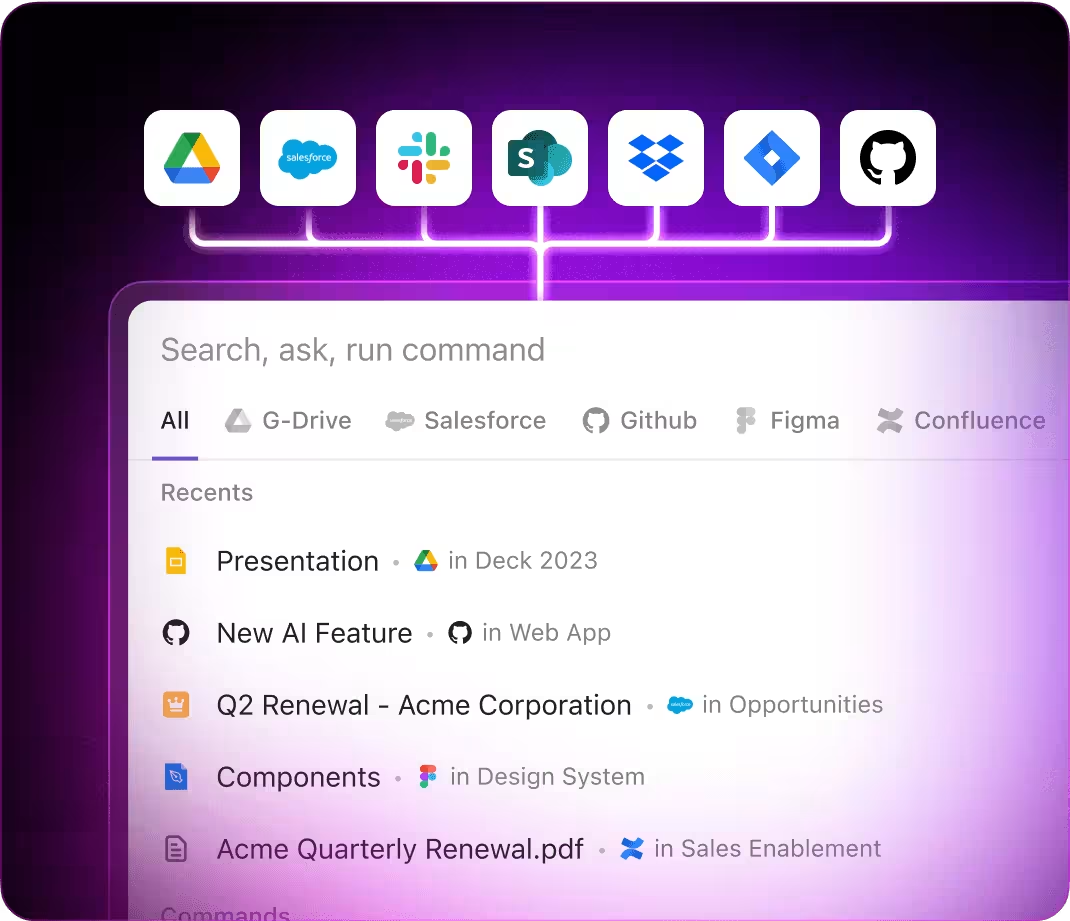
Sprint Retrospective Insights
Key Ways AI Prompts Enhance Sprint Retrospective Reports
Boost team reflection, identify improvement areas, and capture actionable feedback efficiently with AI-powered prompts in ClickUp Brain.
From Sprint Notes to Retrospective Reports
Sprint retrospectives can start as fragmented feedback and scattered thoughts. ClickUp Brain organizes these into clear, actionable reports—right inside ClickUp Docs.
Leverage ClickUp Brain to:
- Convert raw sprint observations into polished report templates
- Produce insightful summaries drawing from previous sprint data (using context-sensitive AI writing)
- With Brain Max, instantly explore past sprint reviews, team comments, and project files to inform your next retrospective cycle.
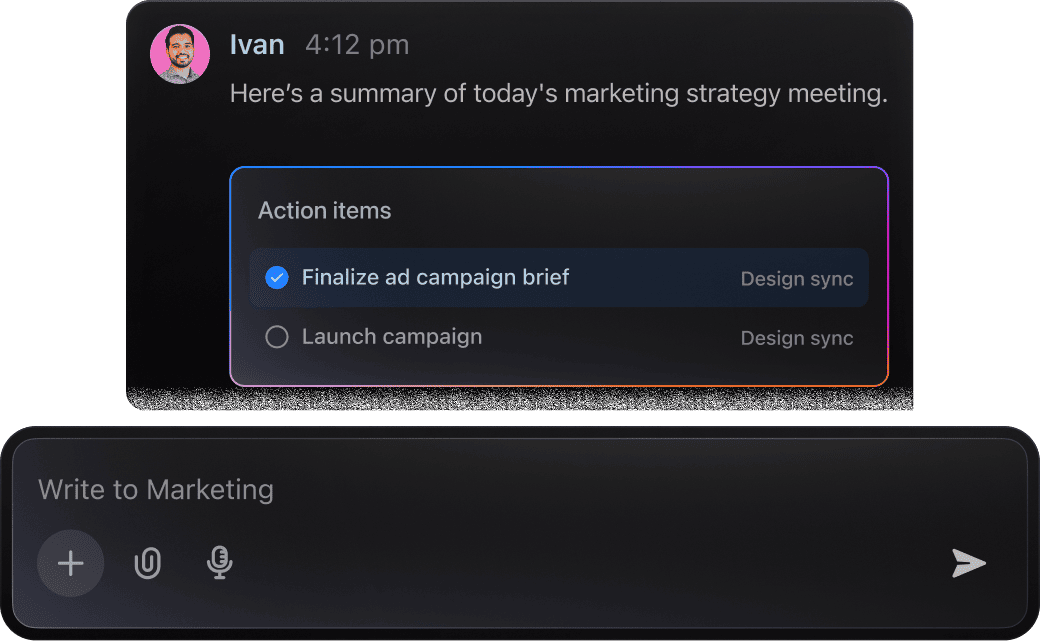
Sprint Retrospective Insights
Teams often accumulate extensive feedback and observations during sprint retrospectives. ClickUp Brain transforms these detailed notes into clear action plans, highlights improvement areas, and crafts concise summary reports.
Leverage ClickUp Brain to:
- Condense sprint feedback and discussion points from tasks or Docs
- Convert team reflections into prioritized follow-up tasks
- Generate comprehensive retrospective summaries effortlessly
- With Brain Max, instantly access past sprint decisions, team sentiments, or project adjustments across your workspace—eliminating the need to sift through lengthy notes.
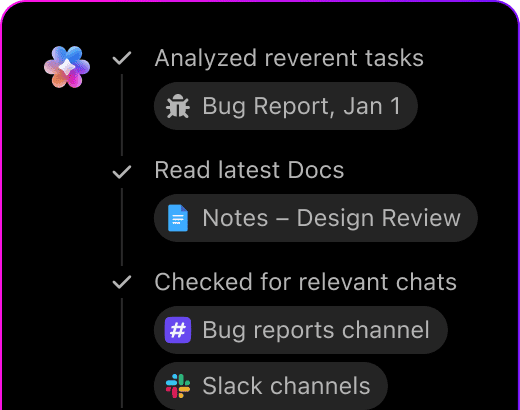
Sprint Retrospective Report
Reflecting on your sprint's successes and challenges involves sifting through team feedback, metrics, and notes. ClickUp Brain simplifies this process—distilling key takeaways and crafting clear, focused retrospective summaries.
Leverage ClickUp Brain to:
- Analyze discussion transcripts for meaningful action items
- Compose concise summaries that capture team sentiment and progress
- Convert feedback into prioritized tasks or improvement plans
- Brain Max enhances this by effortlessly referencing past sprint retrospectives or related project insights, even over extended timelines.
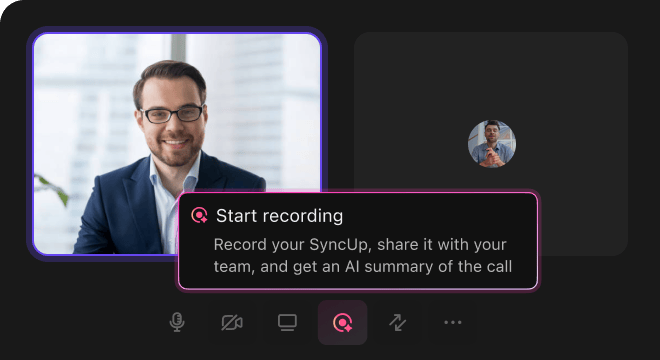
AI Advantages
How AI Prompts Revolutionize Sprint Retrospective Reporting
Integrating AI prompt workflows reshapes how your sprint retrospectives come together:
- Accelerate reflections: Transform raw feedback into structured reports and actionable insights swiftly
- Minimize oversights: Detect recurring issues by analyzing previous sprint data and team comments
- Align your team: AI-crafted summaries and follow-ups ensure everyone shares the same understanding
- Make informed choices: Use prompts to uncover bottlenecks and compliance checkpoints
- Drive continuous improvement: Generate innovative strategies that push beyond standard sprint goals.
All these features integrate directly within ClickUp, turning your AI-generated content into reports, tasks, and dashboards that propel your team’s progress.
Prompt Strategies
Crafting Effective Prompts for Sprint Retrospective Reports
Clear prompts lead to insightful retrospectives.

Define the sprint and team context clearly
Vague prompts produce broad feedback. Specify details like sprint duration (e.g., “two-week sprint”), team size (e.g., “cross-functional team of 8”), or project focus (e.g., “mobile app development”).
Example: “Summarize key achievements and blockers from a two-week sprint by a remote marketing team.”

Use comparative prompts to evaluate outcomes
AI excels at contrasting results and processes. Employ prompts like “compare sprint outcomes vs previous sprint” to identify improvements, recurring issues, or shifts in team dynamics.
Example: “Compare team velocity and impediments between Sprint 5 and Sprint 6.”

Frame prompts around team goals and challenges
Approach prompts as specific tasks reflecting what the team needs to learn or improve. Instead of “Generate retrospective notes,” focus on actionable insights:
Example: “Identify top three process bottlenecks affecting delivery speed in the last sprint.”

Specify the desired report format
Need a bullet list of action items, a summary paragraph, or a risk assessment table? Clarify the output style to get structured and useful reports.
Example: “Provide a bullet-point list of sprint successes and lessons learned with brief explanations.”
Enhance Sprint Retrospectives with ClickUp Brain
ClickUp Brain goes beyond basic task tracking—it's your strategic partner in crafting insightful and actionable sprint retrospective reports.





